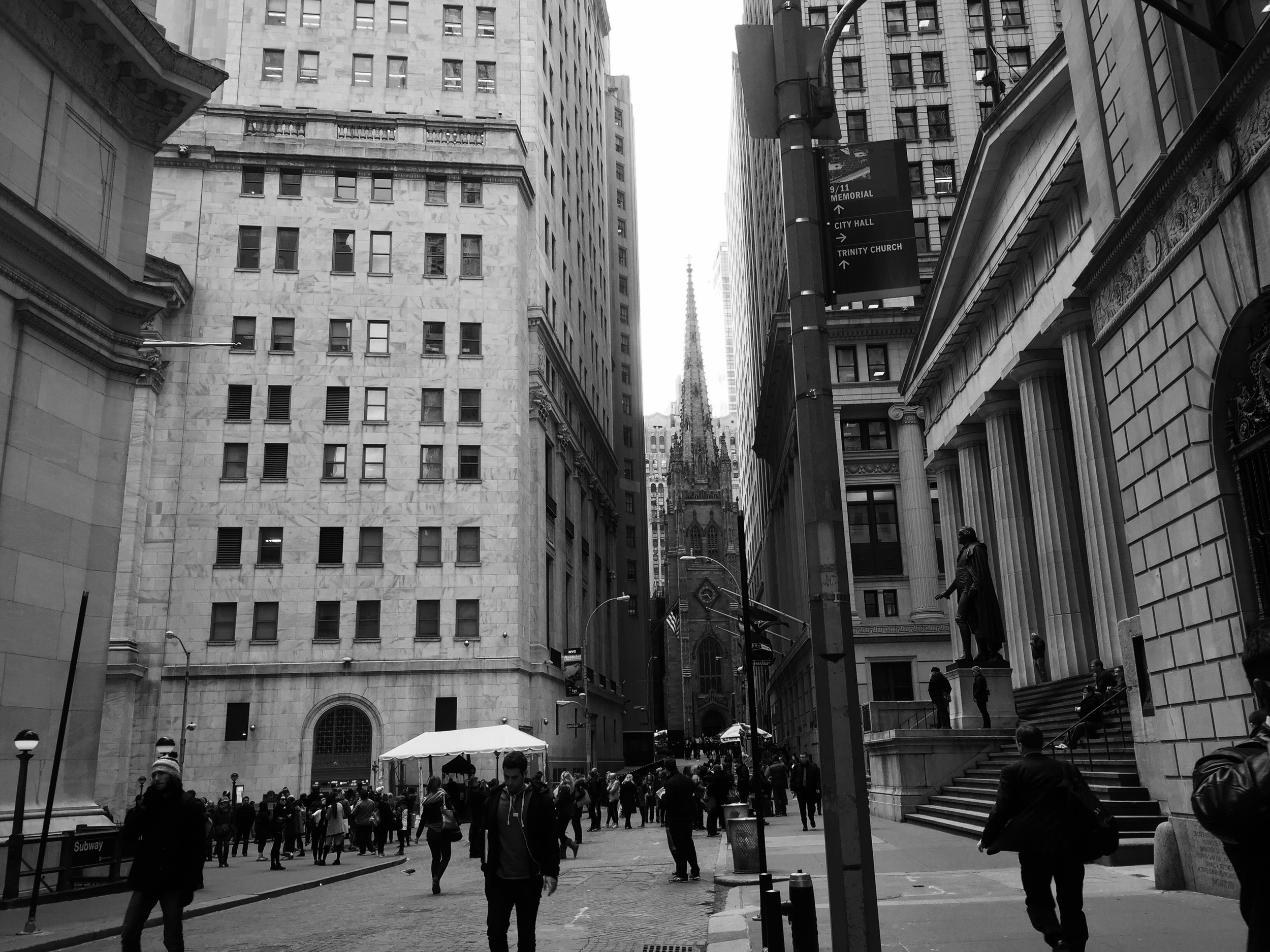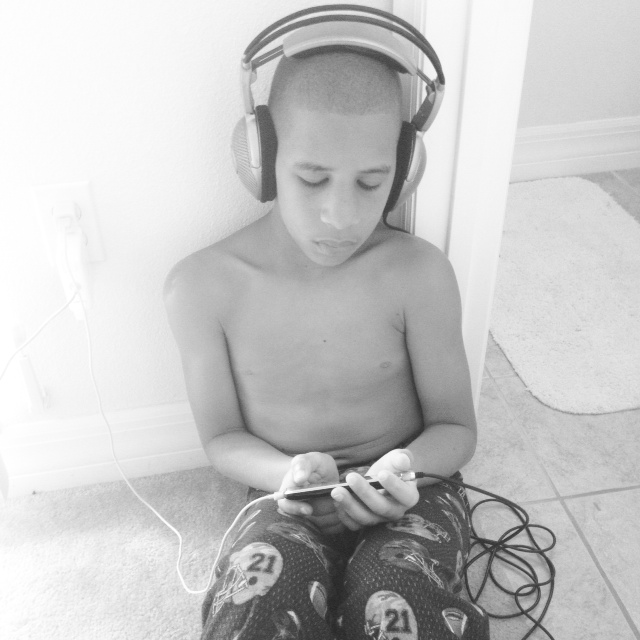Simon Says: #ThatMomentWhen a research participant reminds you that you're a good person
 A lot has been going on in my life. A lot of not-so-good things. Is Mercury retrograde over yet?
A lot has been going on in my life. A lot of not-so-good things. Is Mercury retrograde over yet?
While transcribing an interview from a conversation I had a few months ago with one of my research participants, I was reminded that my life still matters, and equally as important, that I *really* need to finish this dissertation. Mercury retrograde be damned.
The following is an excerpt from a conversation with a 19-year-old male from Bed-Stuy, Brooklyn. I'll call him Simon. This conversation occurred six months into data collection.
Tara: If this is the last time we ever speak, what is the one thing you want me to take away from this conversation?
Simon: That you have this charm to you. No real talk! Like you have a charm to you. Like, I be happy to see you everytime I see you.
Tara: It doesn’t have to be about me! That wasn't the point of me asking the question but that’s real sweet though.
Simon: Like you real cool. That’s the last thing I’d tell you! That you’re a very good person. That you’re very cool. That you’re charming.
Tara: Likewise. The feeling is mutual.
Simon: Thank you.
Tara: Do you have any questions for me?
Simon: When are you going to finish your dissertation?
#ThatMomentWhen social science research is cathartic. To be continued...
Fieldnotes 2: "In New York City, you have to make your own space"
 The following are excerpts from my fieldnotes describing a recent site visit. The names have been changed to protect privacy.
The following are excerpts from my fieldnotes describing a recent site visit. The names have been changed to protect privacy.
Excerpt 1
Roughly 45-minutes into the three hour visit, I noticed something interesting happening. This wasn’t anything I hadn't seen or read about before. It was certainly an instance that I’ve witness emerge inside and outside of classroom spaces, at public events, and around the dinner table. As Chad, a frequent customer at the cafe, talked to me, I noticed behind the counter that Ethan, Ben, and another young man who worked there were all hunched over their cell phones. iPhones, to be exact.
“Yo, you didn’t tag me, son!” Ethan said to Ben. There weren’t any customers in the cafe at this point. Ethan and Ben, while sitting behind the counter, were looking at their phones toggling through Instagram photos.
“Yo, she is ugly, son!” Ethan said to Ben, laughing. Chad looked up from our conversation and asked who they were looking at.
“That’s wifey.” Ethan responded looking at the iPhone screen.
“His wifey is ugly? How’s that?” Chad asked.
“No, no,” Ethan replied, “We looking at another picture now.”
If the cafe was a gendered space, it couldn’t be anymore masculinist than it was at this particular moment. This is what being in a barbershop must feel like, I thought to myself. I was the only woman in the space but that didn’t stop Ethan, Ben, and Chad from exchanging banter about pics of girls and women they gawked at on Instagram. These were light moments between Ethan, Ben, and Chad. I didn’t interject.
Later in the conversation, I asked Ethan and Ben if they were on Twitter.
“Nah,” replied Ethan.
They preferred Instagram along with a new Instagram-like application called Shots.
“Twitter is for females.” Chad interjected. “It’s gossipy, you know?”
“And Instagram isn’t?” I responded. (I had to.)
“Instagram is messy, but not gossipy like Twitter.” Chad replied.
We spent the next fifteen minutes talking about Twitter, Instagram, and then Facebook--which everyone, even me, seemed to agree was wack.
“People break up over Facebook, yo!” Ethan announced.
He told me about the time his girlfriend saw that he liked another girl’s picture on Instagram.
“I was liking this girl's pic to get more followers. It’s like promotion.” He said.
When Ethan's girlfriend found out that he was liking other girl's pictures on Instagram, she ended the relationship.
“I didn’t even do nothing!” He said.
Ben, who at this point I’ve dubbed the quiet one (relative to Ethan), asked if I was on Instagram. I told him I was, but that my account is private. I told him that I’m more active on Twitter. It’s where I get my news.
“Twitter used to be hot back in the day when it first came out, but not anymore.” Ethan said.
In many ways, I agreed with him. Twitter is a much more difficult space to navigate these days than in previous years. But perhaps so is social media in general.
Ethan showed me a picture of him on Instagram when he was 15-years-old. Ben posted the photo but forgot to tag Ethan. If Ethan wasn’t sitting directly next to Ben while they were scrolling through pictures, he probably wouldn't have noticed that Ben didn’t tag him.
“Can I take a picture of you guys while you're looking at your phones?” I asked.
Ethan eyes lit up. “Yes! You gonna put it on Instagram?”
I told Ethan and Ben that I would never post their pictures on Instagram. I also told them that the photos I was taking throughout the day were only going to be used for research.
But Ethan persisted. “You can put [the pic] on Instagram if you want.”
I didn't. Instead, I texted the photos to Ethan's cell phone.
These young men, although labeled disconnected at one point in their lives, were anything but. They moved about in the physical space of the cafe. They also moved about in the virtual spaces of social media. Their bodies, identities, and constructs moved fluidly across time and space. Sociality manifested as mobilities within and among physical, virtual, online, and offline spaces (or places?). These movements, constructs, activities, or whatever you call it were indicative of two very connected and co-present people.
Ethan and Ben's iPhones played significant roles in how connection was established and maintained. These objects, in other words, sustained connection. They also remained in Ethan and Ben's pockets the entire time while they served customers coffee and food.
Yet, Ethan and Ben clearly chose when and where to connect. While they sat in the physical space of the cafe--a constant, sustaining, and perhaps even safe place--the virtual spaces they participated in via their iPhones were not on equal footing. To Ethan and Ben, the spaces that constitute social media held different meanings about their interactions with other people.
Excerpt 2
Later on that day, Patrick, a white guy and regular customer arrived. He playfully argued with Ethan saying that Samsung makes better phones and electronics than does Apple. Ethan wasn’t hearing it though. He, and I too, pointed out how the Apple brand is much more sophisticated than Samsung.
"But, then again," I interjected, “neither Apple nor Samsung are paying my bills so for me it’s not that serious.” I said this while pulling out my iPad Air to check my email.
The banter continued. It was a lovely indication and reminder that there was community here, and it was alive, emerging, and always-becoming.
The topic of conversation shifted. I found out that Patrick was once a middle school teacher. He lived in the neighborhood. Patrick talked about once working in rural North Carolina. He loved the students but hated the parents. He chose to quit teaching once he realized he wasn’t being supported.
Patrick then talked about how it was too expensive to live in Bed-Stuy.
“You can’t find a studio in this neighborhood for less than $1100,” he said.
“Shit, if that!” Chad interjected.
Patrick continued, “The Hassidics are buying up the blocks around here. Then, you know what they do? They rent out rooms. Not apartments. Rooms! You end up living in a shoebox for thousands of dollars.”
“Yeah, that’s pretty crazy” I replied.
“In New York City, you have to make your own space,” Patrick said.
Space, an enigmatic concept, seems to facilitate and impede connection all at once, doesn't it? How then do we make spaces when, in our own lives, space is so obviously scarce, devalued, contested, and always-becoming?

